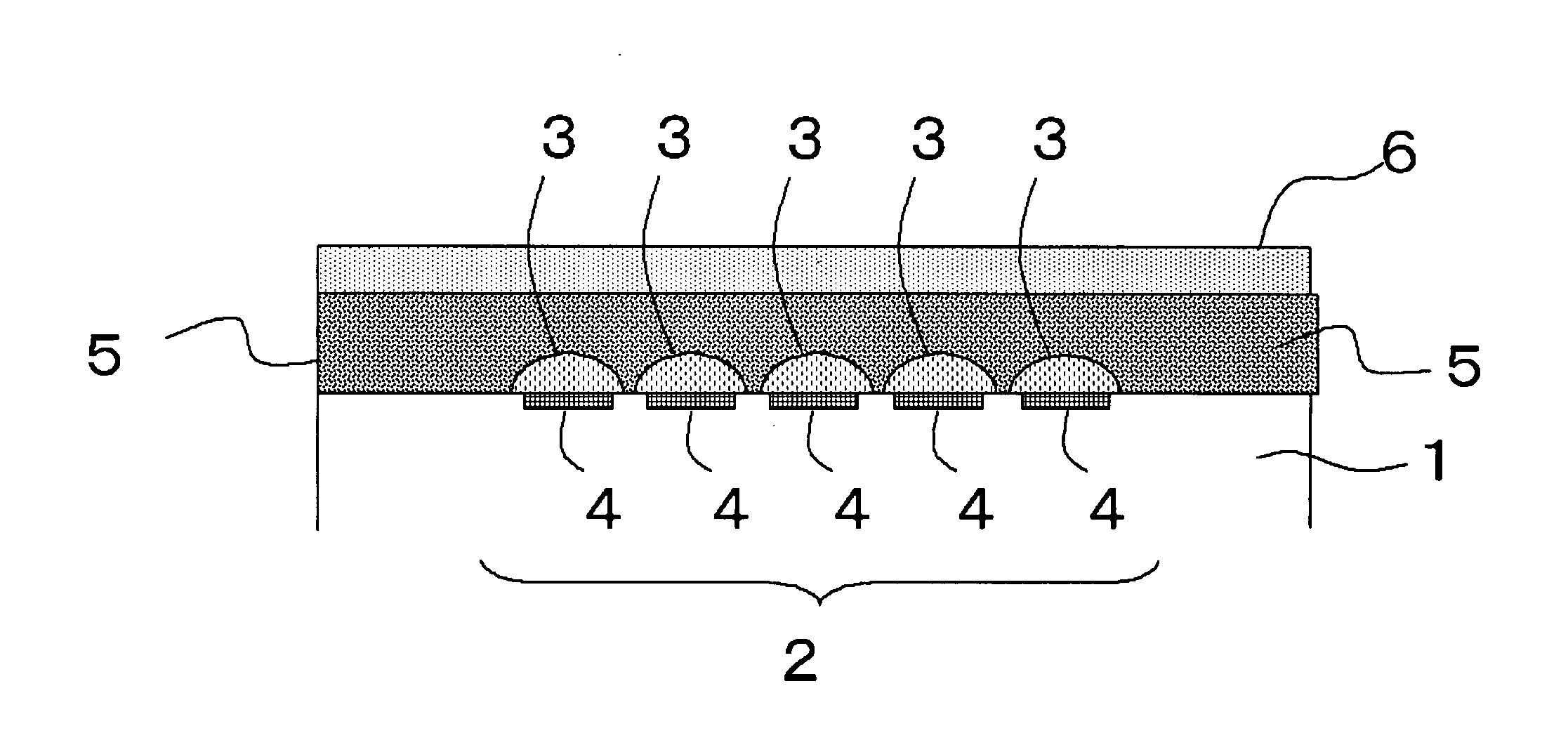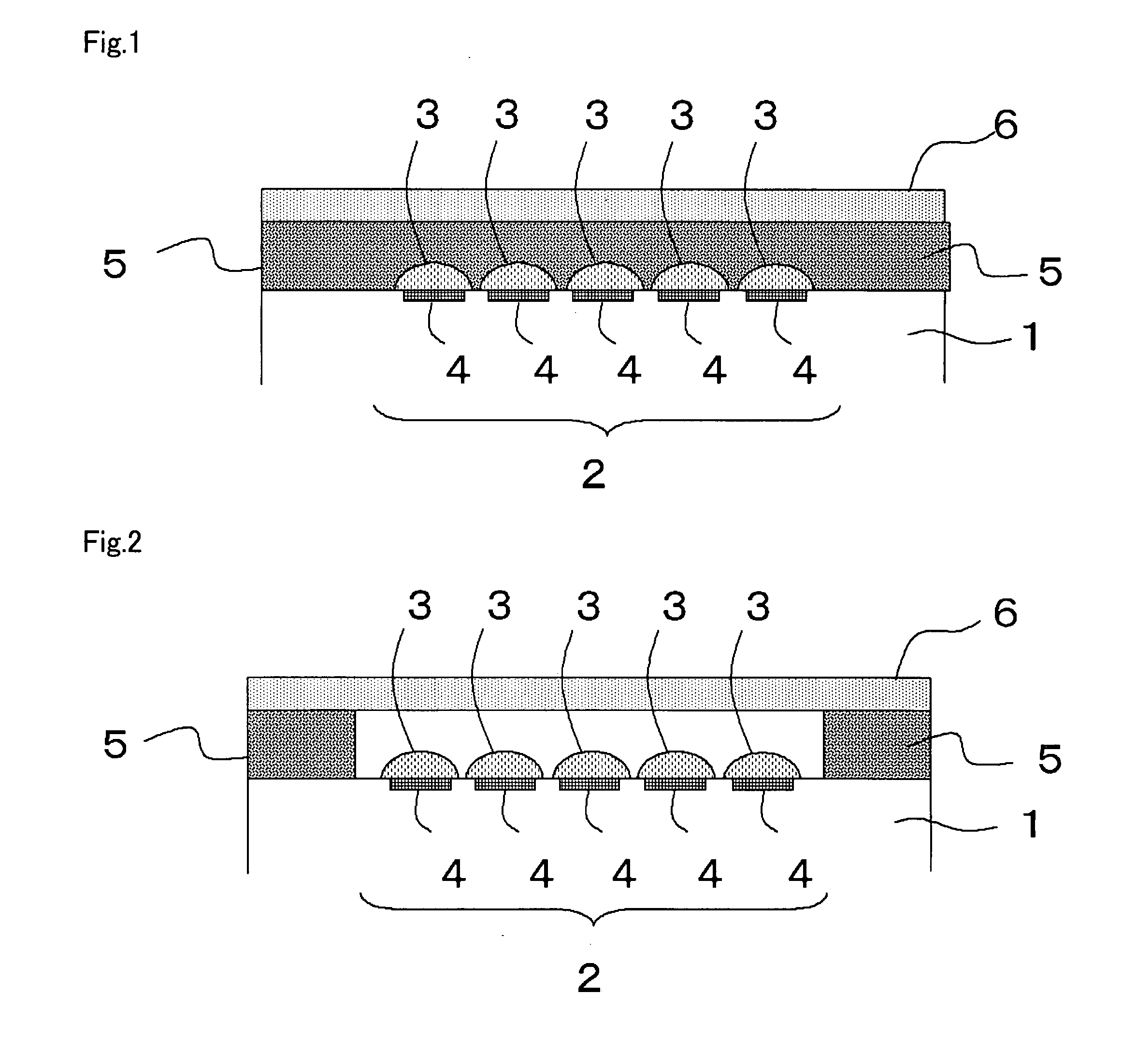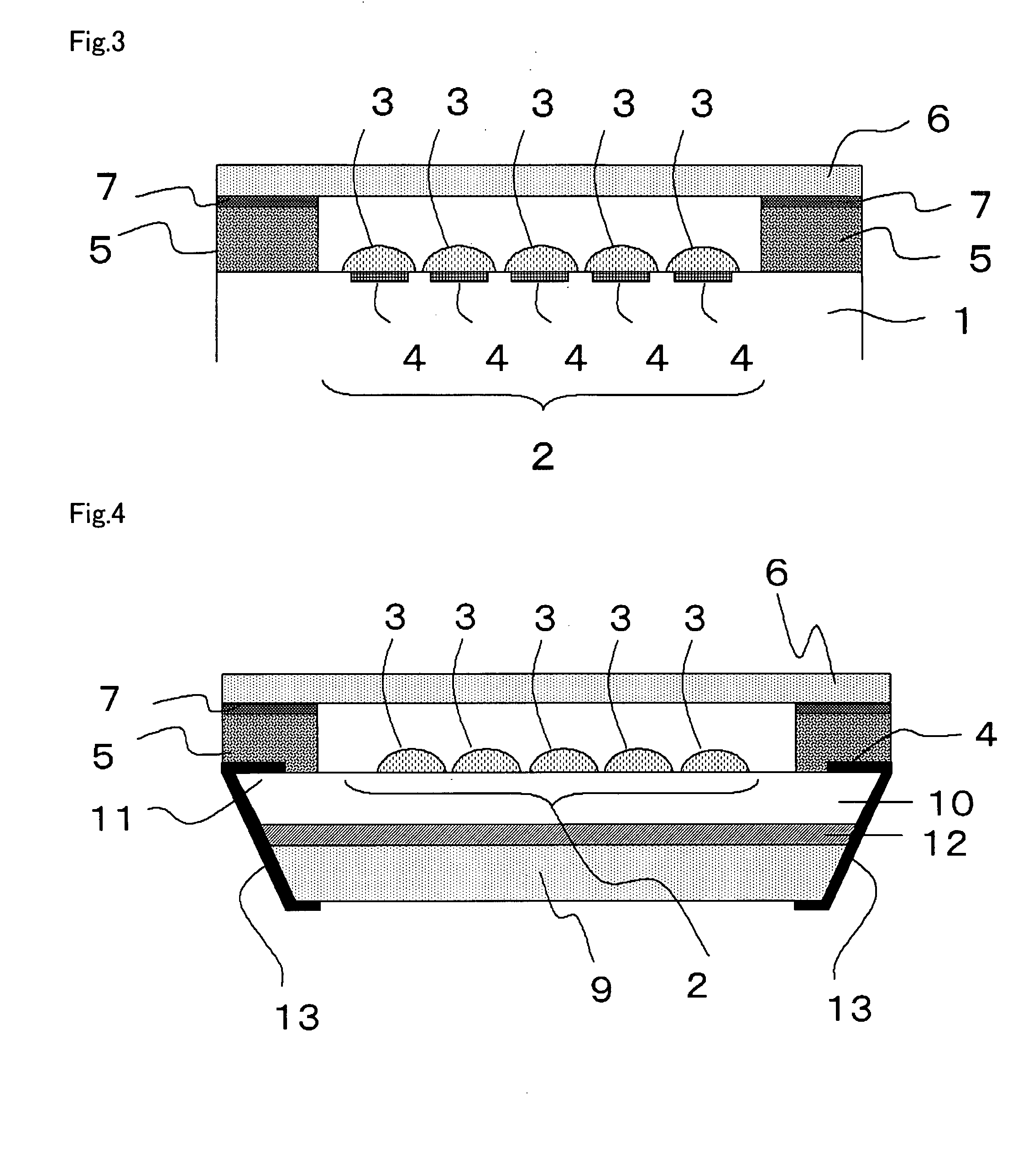Light-Receiving Device
- Summary
- Abstract
- Description
- Claims
- Application Information
AI Technical Summary
Benefits of technology
Problems solved by technology
Method used
Image
Examples
first embodiment
[0014]FIG. 1 is a diagram, showing a schematic structure of a light receiving element according to the present embodiment. Such light receiving element includes a substrate 1, a light receiving element 2 provided on a surface of the substrate 1, a transparent cover 6 provided above such surface, and a sealing member 5, which is provided to fill a gap between the substrate 1 and the transparent cover 6 and adopted for providing a seal for the light receiving element 2 from the exterior thereof. The sealing member 5 is composed of a material containing a cyclic olefin resin. The light receiving element 2 on the support 1 is presented by a two-dimensional array of pixel sensors composed of photoelectric regions 4 and microlenses 3, and this may alternatively have a standard configuration. An image resolution that the image sensor can be achieved is determined by the sizes and number of the pixel sensors, and the arrangement thereof ordinarily includes several hundreds to several thousa...
second embodiment
[0020]FIG. 2 is a diagram, showing a schematic structure of a light receiving element according to the present embodiment. Such light receiving element includes a substrate 1, a light receiving element 2 provided on a surface of the substrate 1 and a transparent cover 6 provided above the surface thereof. A sealing member 5 composed of a material containing a cyclic olefin resin is provided between the substrate 1 and the transparent cover 6. The sealing member 5 is provided to surround the light receiving element 2 in a position remote from the light receiving element 2, and joins the substrate 1 with the transparent cover 6 and has a hollow portion formed in the inner side thereof. The sealing member 5 is composed of a material containing a cyclic olefin resin.
[0021]The sealing member 5 functions as a spacer (dam) for forming a hollow structure between the transparent cover 6 and the light receiving element 2. The sealing member 5 may be joined to the transparent cover 6 through t...
third embodiment
[0024]FIG. 3 and FIG. 4 are diagrams, showing a schematic structure of a light receiving element according to the present embodiment. FIG. 4 shows a cross-sectional view of a CMOS image sensor, which has a wafer level chip size package (CSP) structure that is a type of a light-receiving device shown in FIG. 3 and has a hollow structure of the present invention.
[0025]In the light-receiving device according to the present embodiment, the sealing member 5 is disposed so as to surround the light receiving element 2 to join the substrate 1 with the transparent cover 6, and has a hollow portion formed in the inner side thereof. An upper portion of the sealing member 5 has a flat geometry, and a transparent cover is provided on the surface thereof through an adhesive agent 7, as required. The sealing member 5 is higher than the microlenses 3, and if the transparent cover 6 is provided on the upper surface of the sealing member 5, an air gap is formed between the microlenses 3 and the trans...
PUM
 Login to View More
Login to View More Abstract
Description
Claims
Application Information
 Login to View More
Login to View More - R&D
- Intellectual Property
- Life Sciences
- Materials
- Tech Scout
- Unparalleled Data Quality
- Higher Quality Content
- 60% Fewer Hallucinations
Browse by: Latest US Patents, China's latest patents, Technical Efficacy Thesaurus, Application Domain, Technology Topic, Popular Technical Reports.
© 2025 PatSnap. All rights reserved.Legal|Privacy policy|Modern Slavery Act Transparency Statement|Sitemap|About US| Contact US: help@patsnap.com



